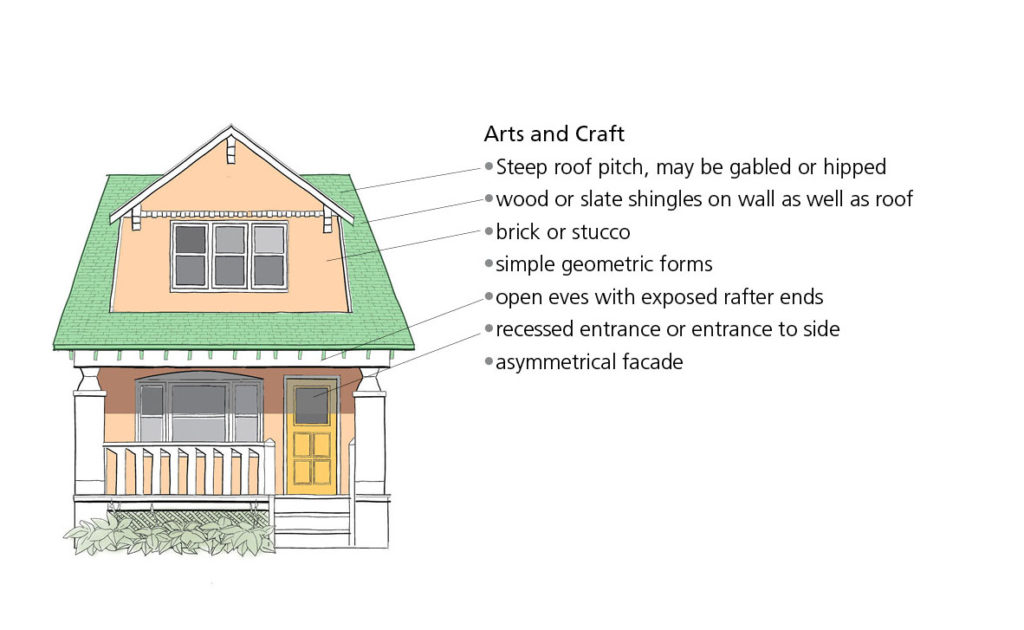
Inspired by the “honesty” of Medieval building, and theorized by Ruskin and William Morris in the late nineteenth century, the Arts and Crafts Movement advocated traditional materials and building practices, good craftsmanship and simple ornamentation.
In Toronto, the leading Arts and Crafts exponent was the architect Eden Smith. His design for what is now the Spruce Court Cooperative housing (1913) at Spruce Street and Sumach Street is an outstanding Canadian example of Garden City planning, derived from Arts and Crafts principles. Because the Movement claimed to be “styleless”, like Queen Anne, its architecture cannot be readily classified by specific motifs. Some Cabbagetown examples have been partly influenced by regional variations.
Many Cabbagetown houses built in the 1920s have distinctly Southern Ontario characteristics. Most prevalent in Cabbagetown is the largely unornamented “Tuscan” variation in which gabled semi-detached and detached houses are fronted by porches supported on Tuscan columns or half columns. A similar type occurs in several nongabled versions, in which a bay is applied above the porch, often aligned with a roof dormer. Several of theses houses occupy the old Toronto General Hospital.
